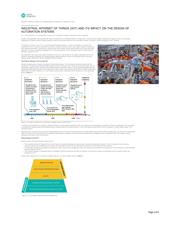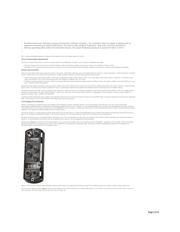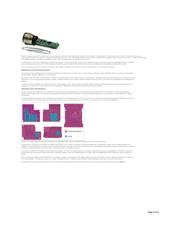下载

Keywords:
Internet of Things, IoT, Industrial Internet of Things, IIoT, microPLC, IO-Link
APPLICATION NOTE 6142
INDUSTRIAL INTERNET OF THINGS (IIOT) AND ITS IMPACT ON THE DESIGN OF
AUTOMATION SYSTEMS
By:
Suhel Dhanani, Sr. Principal MTS, Control and Automation Strategic Marketing, Maxim Integrated
Abstract:
This application note examines the system architecture for an Industrial Internet of Things (IIoT). It focuses on the design challenges that must be solved to successfully
implement IIoT-capable systems. Special attention is given to the growing need for more and smarter sensors, microPLCs, and the emerging IO-Link standard.
The Internet of Things, or the IoT, is a current buzzword gaining traction in a number of industries. A variation, the
Industrial
IoT (IIoT), is quite the rage within
automation companies seeking to add a high-margin software component to
their traditional businesses. Coming from a semiconductor chip company whose devices enable much of the automation
equipment out there, we at Maxim Integrated have a unique perspective on how automation system architectures are
evolving to support the IIoT.
This application note looks at the system architecture for the IIoT, and focuses on the design challenges that must be
solved to successfully implement IIoT-capable systems. Special attention is given to the growing need for more and
smarter sensors, MicroPLCs, and the emerging IO-Link
standard.
The Path to Industry 4.0 Is via the IIoT
Siemens categorizes the industrial revolutions in three distinct phases. The first industrial revolution started with the
introduction of mechanical production facilities helped by water and steam power. The second revolution began with the
introduction of electric power. The third came with the advent of automation, which could be argued happened when the
first programmable logic controllers (PLCs) appeared on factory floors. Now Siemens, along with the German government,
believe that it is time for Industry 4.0, a new revolution when custom components will be produced in a fully automated
fashion (
Figure 1).
Figure 1. The path to Industry 4.0 is via the IIoT. Graphic source is: DFKI (2011).
In Industry 4.0 production from inception to delivery
is based on communication among the parts to be created and the assembly line machines. Germany is pushing this IIoT movement
to leverage their manufacturing and embedded software expertise within the industrial domain. In the United States General Electric (GE) is working on a similar initiative called, "The
Industrial Internet."
Manufacturing is the sector that can get the most leverage from the IoT because of the sheer amount of data captured and processed within manufacturing. And, data is the underpinning
of the IIoT since it can all be analyzed and visualized to help optimize operations and costs. Within manufacturing, the intelligent sensors, distributed control, and complex, secure
software are the glue for this new revolution.
What Exactly Is the IIoT?
Industry experts and market analysts define the IIoT.
"The Industrial Internet of Things (IIoT) is the next wave of innovation impacting the way the world connects and optimizes machines. The IIoT, through the use of sensors,
advanced analytics and intelligent decision making, will profoundly transform the way field assets connect and communicate with the enterprise."
"Leading O&G companies are building an infrastructure where sensors, data management, advanced analytics and automation are being used to unlock production, reduce operating
costs and optimize assets."
"The Industrial Internet, a connected network of intelligent machines working the way they are intended, will transform business as dramatically as the consumer Internet has
changed our lives."
Another way to define the IIoT is to look at industrial network in the form of layers shown in
Figure 2.
Figure 2. The automation systems stack that enables IIoT.
®
®
1
2
3
4
Page 1 of 6







